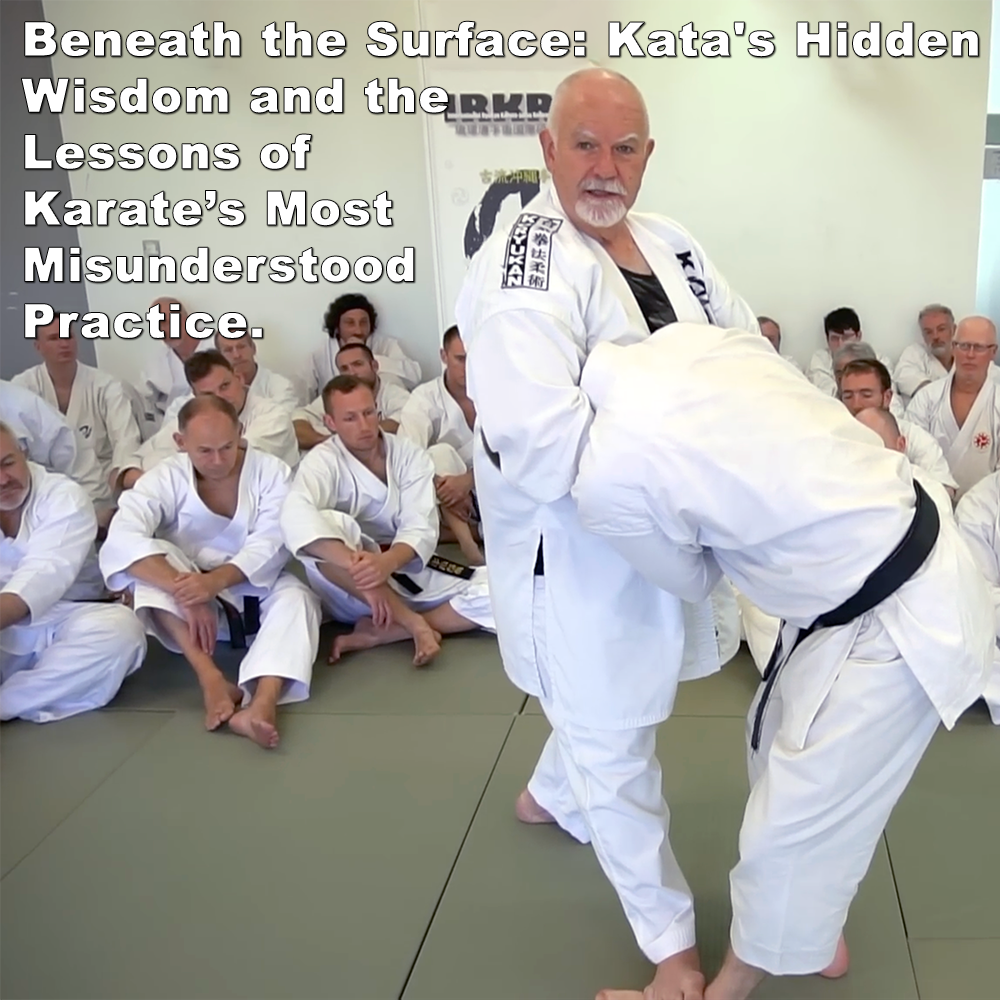
Beneath the Surface: Kata’s Hidden Wisdom and the Lessons of Karate’s Most Misunderstood Practice.
Posted by ADAM CARTER on AUG 20, 2024

Beneath the Surface: Kata’s Hidden Wisdom and the Lessons of Karate’s Most Misunderstood Practice.
(Approx 2 minute 45 second read)
Karate over the decades has been significantly diluted, which means that today, regardless of the reason you’re learning, you might not be getting the full benefit of what this art truly offers. Karate is not just about competition, health, or even the martial art itself – it’s about mastering a comprehensive system rooted in history, designed for real-world application.
Sadly, many overlook karate’s true significance, not bothering to explore its rich history, its diverse influences, or understand why and where it was conceived. This is a superficial approach to understanding.
The truth is, regardless of style, we all inhabit the same body type. Our joints, muscles, and ligaments move in specific ways, allowing only a limited number of movements in response to an attack. This universality means that the fundamental principles of defense are consistent across many different methods and styles.
Many people who judge karate do so from their own limited perspective and imperfect understanding, missing the opportunity to truly learn. I understand why this happens – they haven’t yet experienced the paradigm shift that reveals karate’s deeper significance, not even enough to recognize that such a shift exists.
Take kata, for instance. Most people view only the modern solo performance, missing the point of why kata was embedded in karate in the first place. History is ignored.
Indulge me for a moment. Imagine you live in a time without modern conveniences – no phones, no videos, no books, no transport – nothing that provides quick access to information. Imagine you had to keep your martial knowledge somewhat hidden. There are no large classes, no schools or dojo. How would you transmit this method of defense to others? How would you remember what your teacher taught you? How could you practice alone without a proficient partner?
Many activities encourage solo practice: soccer, tennis, boxing – all where coaches demand it.
This is just within the sporting arena. Practicing alone is something often insisted upon. Why, then, is kata so often sneered at and derided by many?
The answer is misunderstanding. People don’t understand kata because they’ve only seen its surface – the solo representation, the performance, the mnemonic. If all you witnessed was shadow boxing or a soccer player practicing corner kicks, without understanding the broader context, would your perspective be the same?
Today, most schools and dojo teach kata as a performance, a way to pass a test. But this is far from its origins. Kata is the culmination of two-person combative self-defense drills.
Another critic said, “Practical karate people are looking for techniques in modern combat sport to justify their kata.” No. They have it the wrong way around. The movements you witness athletes performing in these modern arenas are already contained within karate’s methods.
Just like a soccer player practicing his corner kicks, kata is not the whole game. You do NOT fight with kata following the sequence of techniques from beginning to end. Kata is NOT an appropriate training tool to teach someone how to engage in consensual violence, or a sporting contest. It wouldn’t work because it wasn’t designed to do that. This is why you do not witness these techniques in modern sparring.
Kata does not teach you how to fight – it’s a learning device.
Another comment “some of the techniques look odd [in kata].” That’s because most of these techniques are designed for close range, such as grabbing distance or a clinch. If you weren’t that close, you wouldn’t engage in the first place – remember, it’s not a competition.
To truly benefit from karate, you have to look beyond superficial practice. Forget the performance art viewed in competition. This is not true. Understand that kata is a vital historical tool for learning and remembering the core principles of self-defense, and view it in context.
Written by AC.
![]() Photo Credit: With thanks to Patrick McCarthy Hanshi 10th dan IRKRS
Photo Credit: With thanks to Patrick McCarthy Hanshi 10th dan IRKRS
